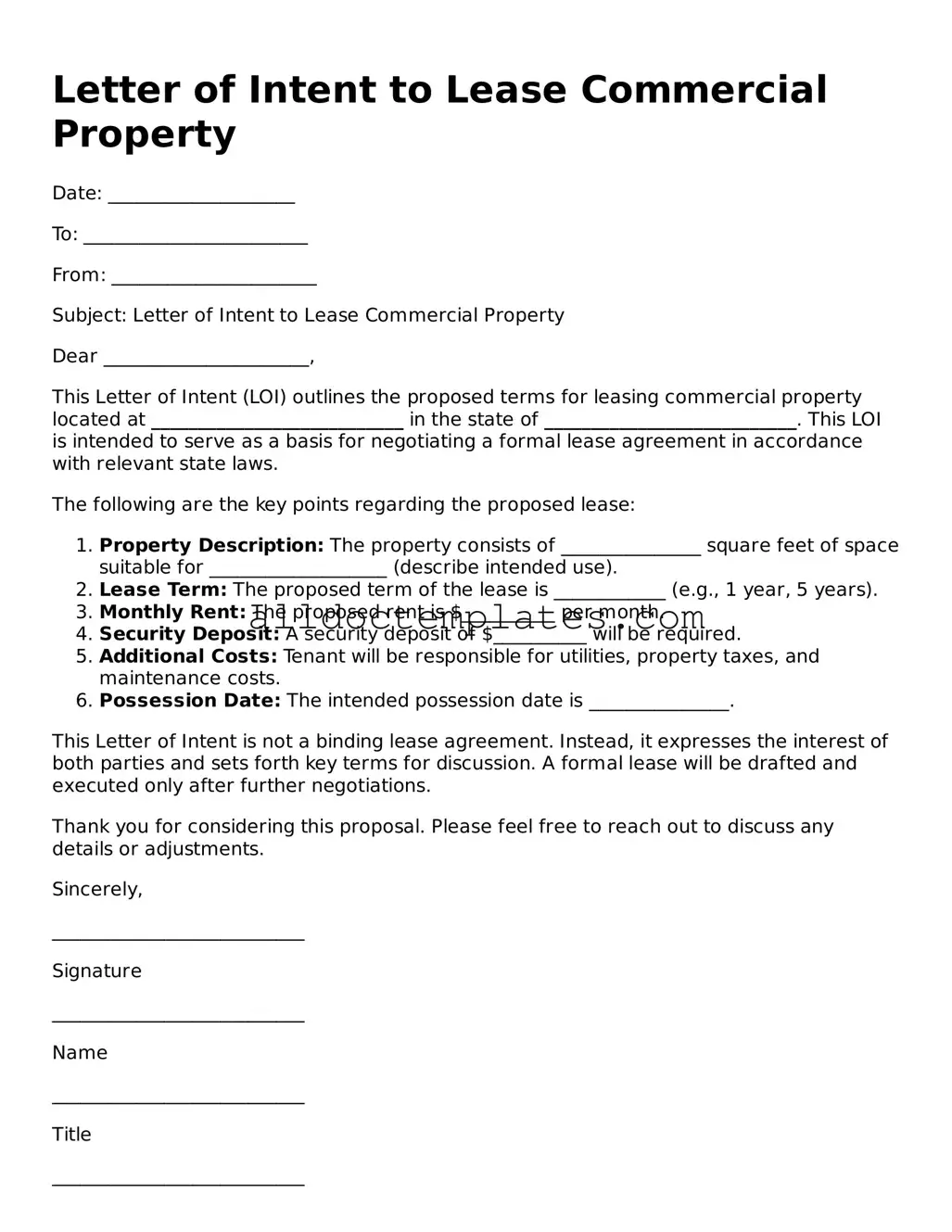Letter of Intent to Lease Commercial Property
Date: ____________________
To: ________________________
From: ______________________
Subject: Letter of Intent to Lease Commercial Property
Dear ______________________,
This Letter of Intent (LOI) outlines the proposed terms for leasing commercial property located at ___________________________ in the state of ___________________________. This LOI is intended to serve as a basis for negotiating a formal lease agreement in accordance with relevant state laws.
The following are the key points regarding the proposed lease:
- Property Description: The property consists of _______________ square feet of space suitable for ___________________ (describe intended use).
- Lease Term: The proposed term of the lease is ____________ (e.g., 1 year, 5 years).
- Monthly Rent: The proposed rent is $__________ per month.
- Security Deposit: A security deposit of $__________ will be required.
- Additional Costs: Tenant will be responsible for utilities, property taxes, and maintenance costs.
- Possession Date: The intended possession date is _______________.
This Letter of Intent is not a binding lease agreement. Instead, it expresses the interest of both parties and sets forth key terms for discussion. A formal lease will be drafted and executed only after further negotiations.
Thank you for considering this proposal. Please feel free to reach out to discuss any details or adjustments.
Sincerely,
___________________________
Signature
___________________________
Name
___________________________
Title
___________________________
Contact Information
